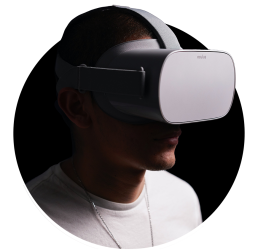Client
The Museum of Prehistoric and Sacred Art of the Tagus Valle
Sector
Tourism and Heritage
Where
Mação, Portugal
Hidden: macao_oportunidade_desktop_pt
The Challenge
Transform
The Museum of Prehistoric and Sacred Art of the Tagus Valley has a collection that includes four nuclei: natural history (collection of fossils from Precambrian formations in the region), ethnography (examples of material culture from some traditional professions), sacred art and archaeology.
In order to make the visitor’s experience more interactive and closer to Vila de Mação and its heritage, the Museum of Prehistoric and Sacred Art of the Tagus Valley was looking for an innovative, differentiating and digital solution.
Accessibility
The Tagus Valley Rock Art Complex is one of the most important post-Paleolithic art collections in Europe, consisting of more than 20,000 engravings spread over 40 km of both banks of the Tagus River.
The so-called Rocha 155 do Fratel is one of the most complex engraved rocks in the entire Complex, with 87 figures ranging from the oldest Tagus figures, such as horses and deer, to more recent engravings of human figures. This diversity of engravings is of special importance for understanding the entire chronology of engravings that were made over thousands of years in this site.
Unlike the Foz Côa complex, these engravings were submerged by the river after the construction of the Fratel dam, making it physically impossible to visit. The Museum of Prehistoric and Sacred Art of the Tagus Valley was looking for a solution
Hidden: macao_oportunidade_mobile_pt
The Challenge
Transform
The Museum of Prehistoric and Sacred Art of the Tagus Valley has a collection that includes four nuclei: natural history (collection of fossils from Precambrian formations in the region), ethnography (examples of material culture from some traditional professions), sacred art and archaeology.
In order to make the visitor’s experience more interactive and closer to Vila de Mação and its heritage, the Museum of Prehistoric and Sacred Art of the Tagus Valley was looking for an innovative, differentiating and digital solution.
Accessibility
The Tagus Valley Rock Art Complex is one of the most important post-Paleolithic art collections in Europe, consisting of more than 20,000 engravings spread over 40 km of both banks of the Tagus River.
The so-called Rocha 155 do Fratel is one of the most complex engraved rocks in the entire Complex, with 87 figures ranging from the oldest Tagus figures, such as horses and deer, to more recent engravings of human figures. This diversity of engravings is of special importance for understanding the entire chronology of engravings that were made over thousands of years in this site.
Unlike the Foz Côa complex, these engravings were submerged by the river after the construction of the Fratel dam, making it physically impossible to visit. The Museum of Prehistoric and Sacred Art of the Tagus Valley was looking for a solution that would remove physical obstacles and allow visual access to Rocha 155 and its engravings.
Hidden: macao_solucao_desktop_pt
The Solution
01augmented reality
The Mobile Application “Museu de Mação”, available for iOS and Android and based on NextReality’s VisitAR Product, allows visitors to access relevant information about the Museum and content about Vila de Mação. The Augmented Reality experiences, which the solution provides, are the differentiating, interactive and innovative factor. Experiences such as the Anta da Foz do Rio Frio, which allows you to visualize the staging of a Prehistoric funeral ceremony aligned with the structure of the existing dolmen, or the Vale do Ocreza AR experience, which allows you to visualize the rock engraving technique used on the site, add value to the visitor’s experience and make their visit unforgettable.
VisitAR was the chosen solution by the team at Museum of Prehistoric and Sacred Art of the Tagus Valley to give its visitors a new digital tool to streamline, enhance and value region’s heritage.
Hidden: macao_solucao_mobile_pt
The Solution
01augmented reality
The Mobile Application “Museu de Mação”, available for iOS and Android and based on NextReality’s VisitAR Product, allows visitors to access relevant information about the Museum and content about Vila de Mação. The Augmented Reality experiences, which the solution provides, are the differentiating, interactive and innovative factor. Experiences such as the Anta da Foz do Rio Frio, which allows you to visualize the staging of a Prehistoric funeral ceremony aligned with the structure of the existing dolmen, or the Vale do Ocreza AR experience, which allows you to visualize the rock engraving technique used on the site, add value to the visitor’s experience and make their visit unforgettable.
VisitAR was the chosen solution by the team at Museum of Prehistoric and Sacred Art of the Tagus Valley to give its visitors a new digital tool to streamline, enhance and value region’s heritage.
Hidden: macao_solucao_desktop_pt
02virtual reality
A Virtual Reality application was developed by NextReality to give visitors the opportunity of exploring Rocha 155 and its engravings. Through Virtual Reality glasses, Oculus Quest, Museum visitors are “transported” to the Tagus river, to Rocha 155, as if they were peacefully strolling there. The rise in water level, which affected the physical location, submerging the prints, is now optional, so visitors can enjoy the prints with or without water. As the engraved figures are not always perceptible, it is possible to highlight the different figures of Rocha 155 according to their chronological order, separating the sets of engravings from the Neolithic / Bronze Age and the Mesolithic.
Hidden: macao_solucao_mobile_pt
02virtual reality
A solução de Realidade Virtual desenvolvida permite explorar a Rocha 155 e as suas gravuras. Através dos óculos de Realidade Virtual Oculus Quest, é agora possível aos visitantes do Museu serem “transportados” para a representação virtual do Vale do Tejo com a Rocha 155 a seus pés. Esta experiência de Realidade Virtual permite-lhes ver como a subida do nível de água afetou o local, submergindo as gravuras, e destacar as diferentes figuras da Rocha 155 de acordo com a sua ordem cronológica, separando os conjuntos de gravuras do Neolítico / Idade do Bronze e do Mesolítico.
Hidden: macao_vantagens_desktop_pt
Benefits
With the Virtual Reality application developed by NextReality, it is now possible to visit an important set of Rock Engravings and acquire new knowledge in an interactive and differentiating way, without the need to dive into the murky waters of the Tagus river.
The iOS and Android mobile application “VisitAR” and the Augmented Reality experiences developed by our team, give the visitor the unique opportunity to know and interact with the historical heritage of the village of Mação and the Museum of Prehistoric Art and the Sacred Heart of the Tagus Valley.
Hidden: macao_vantagens_mobile_pt
Benefits
With the Virtual Reality application developed by NextReality, it is now possible to visit an important set of Rock Engravings and acquire new knowledge in an interactive and differentiating way, without the need to dive into the murky waters of the Tagus river.
The iOS and Android mobile application “VisitAR” and the Augmented Reality experiences developed by our team, give the visitor the unique opportunity to know and interact with the historical heritage of the village of Mação and the Museum of Prehistoric Art and the Sacred Heart of the Tagus Valley.
Technologies
App Android
Kotlin
App iOS
Swift
Augmented Reality
EasyAR
Virtual Reality
Unity
Hidden: macao_stores_desktop_pt
Hidden: macao_stores_mobile_pt
Available at
VR App available only on site
Available on Stores
Aplicação VR apenas disponível em visita ao Museu de Mação
"With NextReality we were able to experience the tangible through technology."
Luiz Oosterbeek | Professor & Director







